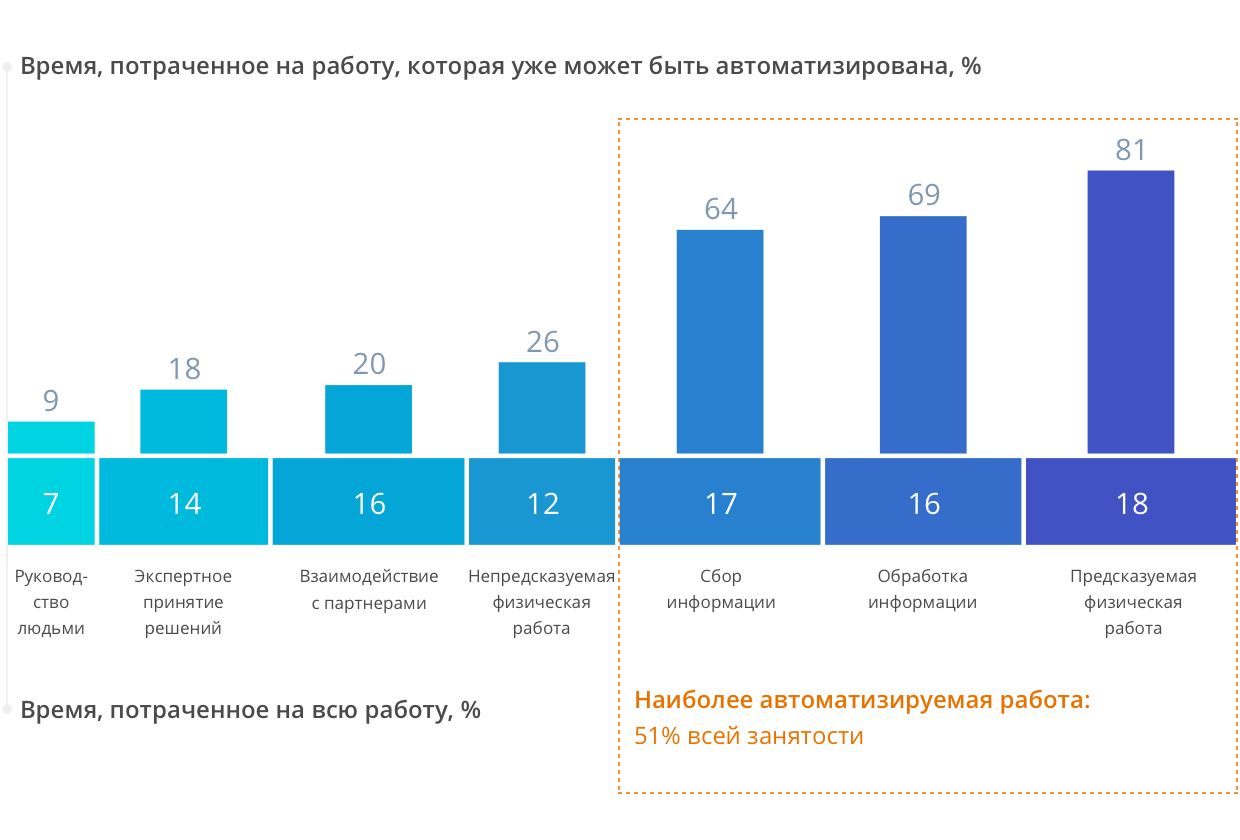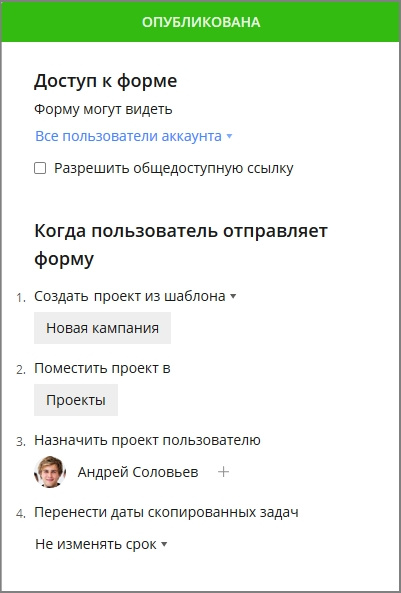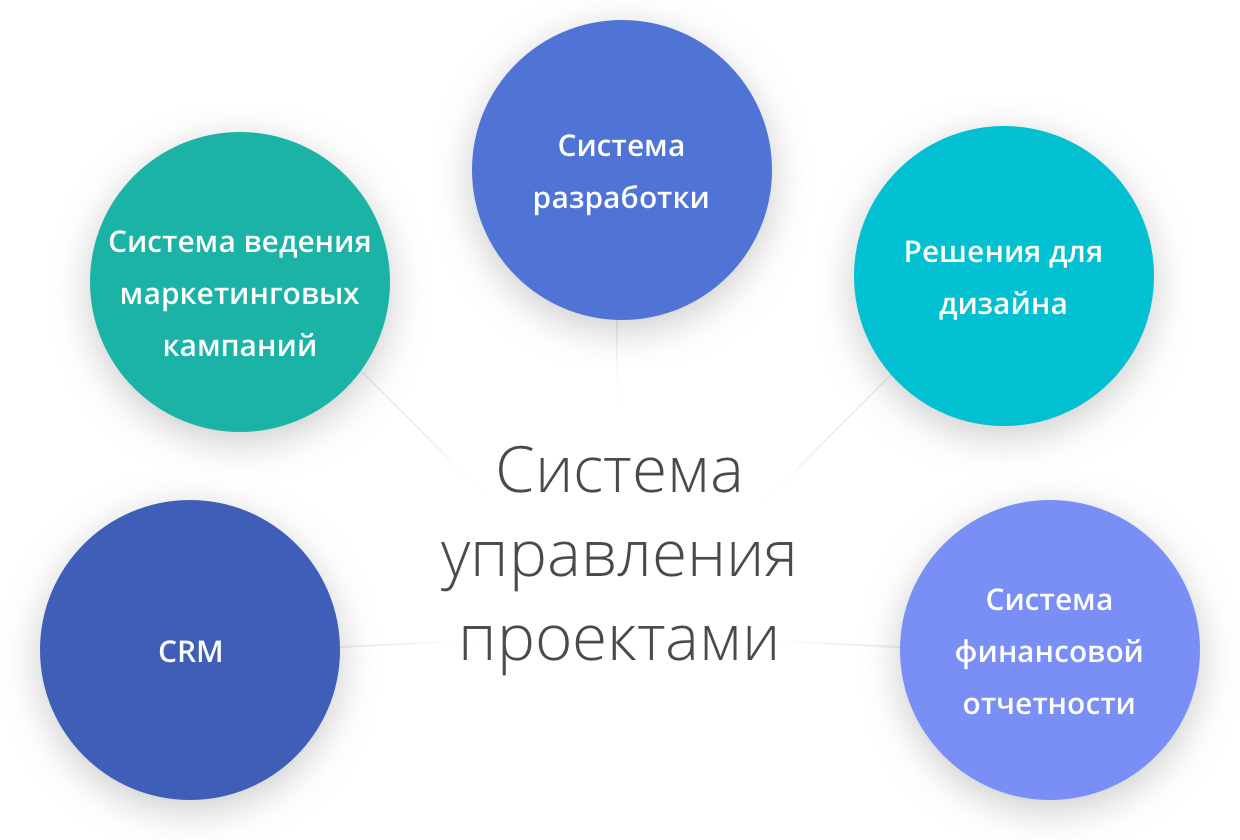Automate it: How the market for the destruction of routine is formed

Work automation is a hot topic. Some experts scare the massive layoffs of the victims of the new industrial revolution. Others are positive and promise an incredible breakthrough in productivity. Anyway, this is a trend that is gaining momentum. Companies of all sizes and industries will actively automate their workflows with new and new solutions to optimize costs and compete.
The field for activity is promising a wide range: according to the McKinsey Global Institute , up to 70% of the work on collecting and processing information (what millions of office workers are doing), planning and coordinating work in project management are potentially automated.

Source: McKinsey Global Institute
')

Source: McKinsey Global Institute
Businesses that go this way before and beyond the rest will get several advantages:
- Reducing the number of errors associated with the human factor.
- The ability to easily scale the business without changing the already built work processes and significant staff expansion.
- Focus on strategic and innovative projects instead of continuous work with the “routine”.
- More flexible planning and the ability to quickly test bold ideas with minimal cost.
Full automation of all processes, predicted in McKinsey, will take more than one year. However, now you can imagine how it all begins. We at Wrike , like other players in the project management solutions market, are trying to identify the massively common elements of workflows, the automation of which will provide a noticeable and quick return for the business. Below we list some of these elements that we would rely on when developing solutions related to the organization of work processes.
Automate incoming requests
Virtually any work begins with a request: a client’s order, a TK, a brief, a ticket, a request in a smoking room, etc. And in many cases, a significant part of the day is spent on making the flow of such requests manageable: prioritize by timing and importance, distribute tasks in a team and often just understand what they want from you. If you optimize work with incoming requests, you can free up a huge amount of working time and at the same time save teams from unnecessary stress.
The output here will be a formalization when you receive a request to work. Strangely enough, a dull bureaucracy can sometimes save us from vague task statements and endless refinements. We see this as request forms integrated with the project management system. They allow you to immediately request and collect all the necessary information from the customer before starting work, and then automatically launch a new project on a template.
For teams working on different types of tasks, branching dynamic forms of queries will be suitable, in which the set of questions changes depending on the answers selected to the previous ones. For example, the marketing department may offer different questions depending on whether another department requests an advertising campaign for a new product or an email newsletter for users.
The completed request becomes a trigger for creating a project using a pre-configured template. Each stage of the work is assigned to the appropriate executor, and the total deadline is calculated by the timing of the individual tasks indicated in the template. Thus, it is possible to remove the work of coordinating the recurring flow of tasks from the manager, and the accuracy of planning will only get better.

Such functionality in one form or another has recently appeared in Wrike and some of our competitors.
Auto sync between apps
The collection of information dispersed across a dozen services and applications imperceptibly but surely eats away a couple of hours of the day from each manager. Therefore, integration is becoming one of the key factors of competition in our market. There are good chances for leadership in solutions that can offer the maximum number of integrations with user-relevant applications.

In the case of project management systems, this, in addition to the obvious cloud file storage and office suites, will be synchronized with the main “vertical” services - for development, design, marketing campaigns or financial reporting. The goal of such integrations is to make work within departments transparent at the level of the entire company without any manual actions. At the same time, time is available for collecting, updating and transferring the readiness status of tasks to colleagues from other departments.
An example of such integrations in Wrike is two-way synchronization with JIRA and Github, which are popular with development teams.
Load balancing
The optimal allocation of team resources, not to mention the entire company, is a true managerial talent that few people have. Even the best of the best will find it difficult to achieve an ideal balance in which each employee will not be overloaded with four important projects at the same time, but he will not, yawning, while away the day at the coffee maker due to the lack of tasks. On the other hand, this is quite a typical mathematical task, which is asked to delegate to artificial intelligence. A nice bonus will be the disappearance of any bias in the distribution of tasks.
The system could offer the ideal candidate for the task, assessing the history of past employee interactions with similar tasks and their availability for new tasks on a workload schedule. If such a mechanism is included at each stage of changing the status of a task (for example, when moving from design to development), then work both within the department and between departments will become more harmonious and less conflicting.
Predicting broken deadlines
Analytical functions, like the report template in Wrike, today allow you to quickly obtain key data slices on the status of projects, without creating a new report each time. However, here the use of artificial intelligence in combination with big data can offer the manager a more complete analysis of the activity.
In particular, such a system could calculate the likelihood of completion of projects on time, based on the deadlines for the implementation of previous projects, highlight projects at risk, and promptly warn managers. Such functionality can dramatically improve planning accuracy and minimize deadlines.
Automation of these and other elements of the workflow should greatly increase the average level of employee productivity. Optimization of working time will change the lives of not only line specialists, but also managers who will be less involved in monitoring and checking the status of tasks and will be able to use their high-paying hours for more creative work. A robot as a department head is still a distant prospect, but the essence of the work (and the skill requirements) of team leaders will surely change in the coming years.
Source: https://habr.com/ru/post/335420/
All Articles